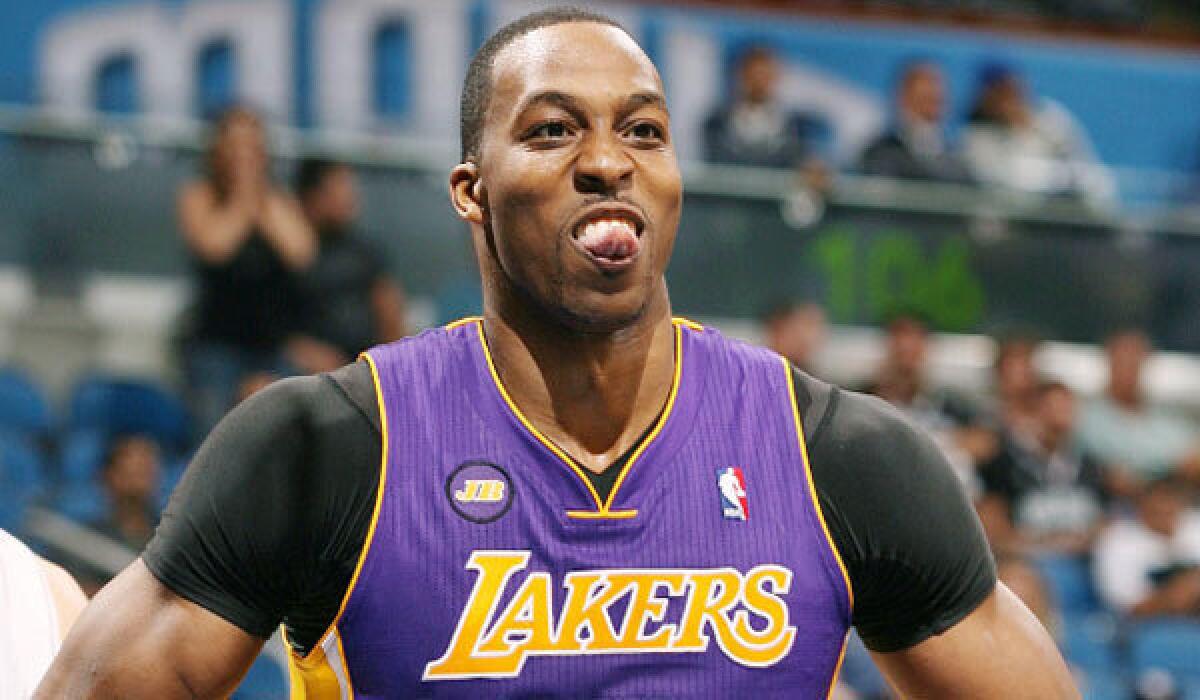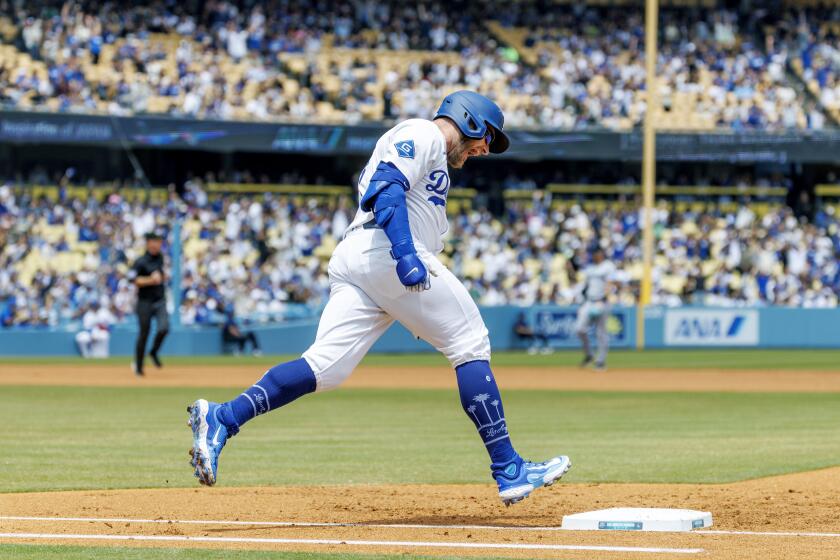Should ‘hacking’ Dwight Howard be considered bad sportsmanship?

- Share via
Lakers center Dwight Howard was “hacked” by Orlando Magic players over and over Tuesday night, and he made them pay by making 16 of 20 free throws when intentionally fouled.
Still, it might have seemed like a good strategy for the Magic going in, seeing that Howard was averaging just 47.8% from the foul line until that point.
Writers from around the Tribune Co. discuss whether the “Hack-a-Howard” play, while legal, should be considered unsportsmanlike. Feel free to join the discussion by leaving a comment of your own.
Ben Bolch, Los Angeles Times
Of course not. Intentionally fouling Dwight Howard is no different from trying to post up Roy Hibbert on Nate Robinson or switching to a 3-2 zone against a team with good interior players but poor outside shooters; it’s all about exploiting a team’s weaknesses. And Howard’s free-throw shooting is generally his biggest shortcoming.
Send him to the line on every possession before the two-minute mark, if you must. Howard will have no choice but to work on his free-throw shooting as a result. Maybe then he can make more than 50% of his attempts.
Josh Robbins, Orlando Sentinel
There’s little that’s “fun” about watching the Hack-a-Howard strategy in use.
I should know. I was there when Dwight Howard broke Wilt Chamberlain’s single-game NBA record for free-throw attempts with 39 on Jan. 12, 2012, in Oakland, Calif., and when Howard shot 39 more Monday night in Orlando.
The games drag on and on.
But intentional fouling of this kind isn’t unsportsmanlike.
It’s part of the game. It’s gamesmanship.
“I’ll always play within the confines of the game, and that’s part of the confines of the game,” Orlando Magic coach Jacque Vaughn before Monday’s game.
Of course, it’s another issue if teams take cheap shots at Howard to send him to the line. The Golden State Warriors and the Magic didn’t do that.
There are two potential solutions to this: Either Howard discourages the strategy by improving his free-throw percentage, or the NBA creates added penalties for purposeful fouls away from the ball.
K.C. Johnson, Chicago Tribune
Here’s an answer that might be viewed as inconsistent as Dwight Howard’s free-throw percentage. Hacking a poor foul shooter in the fourth quarter of a tight game is fine. Doing so in the second quarter as a defensive strategy is not.
The former example is situational and forces the coach of the poor foul shooter to make a decision as to whether or not to play or bench his player. The latter example merely mucks up the game since it doesn’t matter as much -- at least at the time -- if the poor foul shooter makes zero, one or two free throws in the second quarter.
Most NBA coaches avoid gimmick defenses. Hack-a-Shaq, Ding-a-Dwight, etc., all fall under that category. But in late game situations, all is fair. And it’s time for the poor foul shooter to get in the gym and practice.
ALSO:
Hack-a-Howard backfires as Lakers bury Magic, 106-97
Dwight Howard makes his presence known in Orlando with Lakers
More to Read
Go beyond the scoreboard
Get the latest on L.A.'s teams in the daily Sports Report newsletter.
You may occasionally receive promotional content from the Los Angeles Times.










